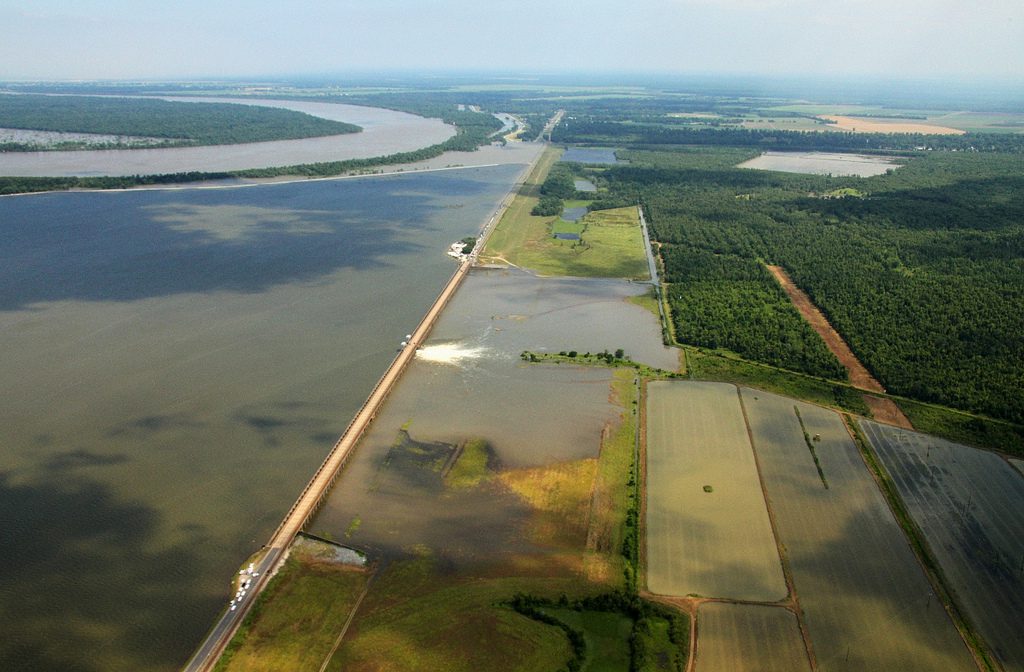Aerial photograph of the first bay opening on the Morganza Floodway on 14 May 2011. The Mississippi River is in the upper left background, and the Atchafalaya Floodway to the right.
By Brian K. Sullivan (Bloomberg) — A major barrier that keeps the Mississippi River in its current path may be opened for just the third time in its history, potentially flooding a large part of rural Louisiana and affecting refineries in the region.
Rising river levels could force the Army Corps of Engineers to divert water by opening the Morganza Floodway — a long dam-like structure that is designed to redirect 600,000 cubic feet per second of water to take pressure off the Mississippi. The river has been high or flooding since last October, engorged by huge rainfalls that have slowed crop planting in the Great Plains and the upper Midwest.
“We are really close to the trigger levels,’’ said Jeff Graschel, service coordination hydrologist with the Lower Mississippi River Forecast Center in Slidell, Louisiana. The state’s governor, John Bel Edwards, is scheduled to hold a press conference this afternoon, according to local media.
While the river is flooding, it’s not as severe as in 2011 — the last time Morganza was opened. Levels on the river are a little less than two feet below its 2011 record crest just upstream from the Morganza barrier. In February, the Bonnet Carre Spillway was opened to help alleviate flood risks in New Orleans, about 28 miles downstream.
The Morganza spillway is located about 45 miles (72 kilometers) northwest of Baton Rouge, and if opened, will send water into the rural area between the Atchafalaya and Mississippi Rivers in central Louisiana.
The Mississippi between New Orleans and Baton Rouge is lined with refineries, chemical plants and grain elevators. The high water has caused shipping delays on the river that is a main route for grain, chemicals, coal and oil. Earlier this year, traffic through Vicksburg was shut down and at various times locks and dams along the waterway have been shut.
While the Mississippi could dip lower in the next few days, forecasters are expecting a new deluge caused by a week’s worth of thunderstorms across the Great Plains and Midwest to send the river rising again by the end of next week, Graschel said by telephone.
Graschel said a large amount of water is expected to flow into the Mississippi from the Arkansas River.
© 2019 Bloomberg L.P

 Join The Club
Join The Club











